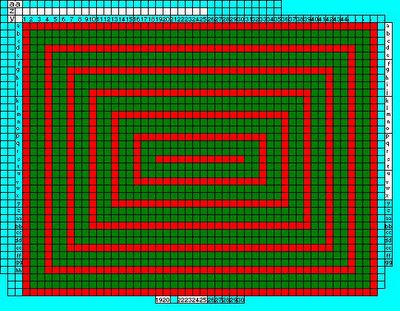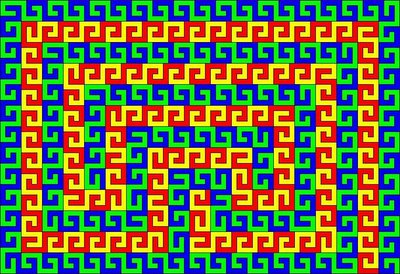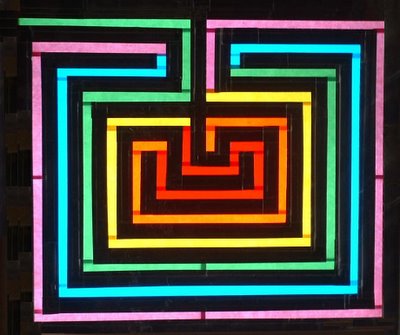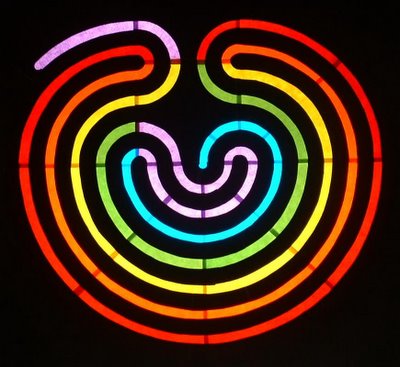Labyrinth

Labyrinths have been with us for a while. According to wikipedia, the ancient Greeks built one to trap the minotaur. In the intervening three thousand years, countless labyrinths have been built, for use as guides to spiritual exploration, to trap evil sprits, or as decorations.
There is a form-function, male-female, yin-yang duality to the labyrinth. There is the wall, and there is the path. The outer layer is wall, except for the entrance. (In a stadium, the cut out in the seating risers that you enter through is known as a vomitory).
The next layer of the concentric form is the path, the next layer in is the wall, and so forth until you reach the center of the form, which is the end of the path. The path layers have wall sections to divide the form into sections, and the wall layers have openings to allow the walker to go from one level to another.
The walls and the path define each other. The space between the walls is the path, and the form between the path is the wall. Here is a design template that shows the path and wall layers before the breaks are inserted.

Postmodern use of labyrinths is as two color image design are very dull. I try to spice up the colors.


Rainbow patterns bring color into a labyrinth.

Rainbow labyrinths are easy to get lost in.

Traditional labyrinths are round. While the round shape has its place in the world, for efficient use of materials and ease of execution, there is nothing like a 90 degree angle.

Labyrinths have a cruel sister, the maze. Both are based on a series of walls and paths, and can be drawn from the same template. However, where the labyrinth has the same number of steps from beginning to end, a maze can be more or it can be less. You have to make decisions with a maze, and it is unlikely you will make all of them correctly.


1 Comments:
"According to wikipedia, the ancient Greeks built one to trap the minotaur."
I wonder how you determine the best way to trap a mythical creature?
Post a Comment
<< Home